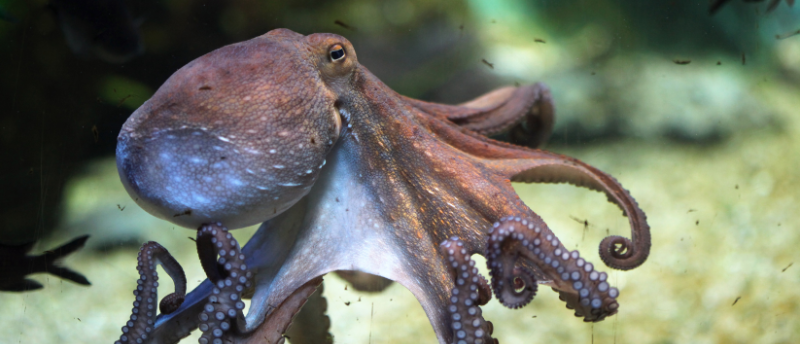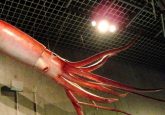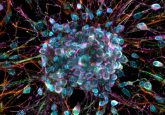What do octopus and human brains have in common?

Researchers identify the same active transposon in octopus and human brains, giving insight to these invertebrates’ intelligence.
Octopuses have impressive cognitive abilities and brains that are unique among invertebrates. A recent study by an international team coordinated by Remo Sanges (International School for Advanced Studies; Trieste, Italy) and Graziano Fiorito (Stazione Zoologica Anton Dohrn; Naples, Italy) found that their neural complexity could be from a molecular analogy to human brains – a similarity caused by convergent evolution, rather than genetic ancestry.
The researchers identified the same active transposon, or ‘jumping gene’, in human brains and in two species of octopus, the common Octopus vulgaris and the Californian Octopus bimaculoides.
Over 45% of the human genome is made up of transposons, which move from one point of the genome to another through a copy-and-paste or cut-and-paste mechanism. Most of these transposons have no visible effects and have lost their mobility, due to inactivity caused by mutations that have accumulated over generations, whilst others are intact but are blocked by cellular defense mechanisms. Despite their silence, the transposon fragments provide useful evolutionary information.
In this study, the molecular composition of the genes in the octopus’ nervous system was achieved with next-generation sequencing techniques. The researchers found transposons belonging to the long interspersed nuclear elements (LINE) family, which is found in 100 copies in the human genome.
“The discovery of an element of the LINE family, active in the brain of two octopus species, is very significant because it adds support to the idea that these elements have a specific function that goes beyond copy-and-paste,” explained Sanges.
 Are cephalopods making a comeback in neuroscience?
Are cephalopods making a comeback in neuroscience?
Danbee Kim writes about the use of cuttlefish in early neuroscience research and provides historical context for the current and renewed interest of cephalopods in neuroscience research.
Until recently, it was thought that the LINE family’s activity was a thing of the past, but research now shows that their activity is finely regulated in the brain. LINE transposons are especially active in the hippocampus and are involved in the neural control of learning processes, leading many scientists to believe these transposons are related to cognitive abilities.
“I literally jumped on the chair when, under the microscope, I saw a very strong signal of activity of this element in the vertical lobe, the structure of the brain which in the octopus is the seat of learning and cognitive abilities, just like the hippocampus in humans,” described Giovanna Potente (Stazione Zoologica Anton Dohrn), a co-author.
Most of the ‘jumping genes’ found in the octopus’ genome were inactive, like in our genome. But, by focusing on the genes that were still able to ‘jump’ along the genome, the researchers discovered transposons from the LINE family in areas of the octopus’s brain crucial for their cognitive abilities.
“The brain of the octopus is functionally analogous in many of its characteristics to that of mammals,” concludes Fiorito. “For this reason, also, the identified LINE element represents a very interesting candidate to study to improve our knowledge of the evolution of intelligence.”




